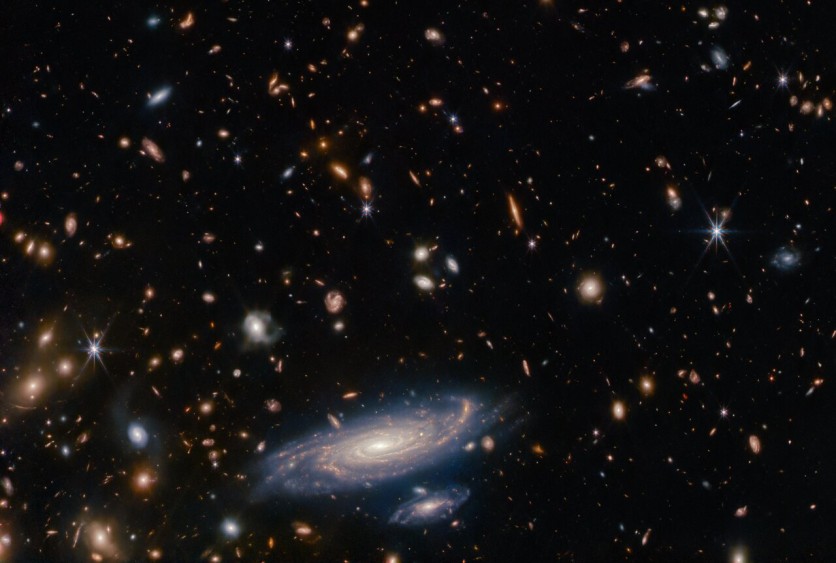NASA's James Webb Telescope continues to flex its prowess in capturing insanely detailed views of the universe after releasing a crowded field of galaxies brimming with brilliant stars and featuring Webb's signature six-pointed diffraction spikes.
The space agency hailed this beautiful galactic scenery as Picture of the Month.
The enormous spiral galaxy at the image's bottom is surrounded by a plethora of smaller, farther-off galaxies, ranging in size from full-fledged spirals to simple luminous blobs.
Its name is LEDA 2046648, and it is located in the constellation Hercules about over a billion light-years away from our planet, according to the European Space Agency (ESA).

Galaxies in all Sorts
On a dark background, galaxies find themselves in all sorts, together with many stars, most of which are glowing in orange hues. Some galaxies have enough size to see spiral arms in the image.
Two galaxies are enormous, intricate spiral galaxies, one roughly one-quarter the size of the other, and both seen at an oblique angle along the bottom of the frame. Both have spiral arms that are illuminated by star formation and a luminous core.
Observing far-off galaxies in the early cosmos to learn more about their genesis, evolution, and composition is one of Webb's main scientific objectives.
Since the light from these far-off galaxies is redshifted toward infrared wavelengths, Webb's strong infrared vision aids the telescope in seeing through the deep bowels of the universe's past.
Astronomers will learn more about the evolution of galaxies by contrasting these systems with galaxies in the nearby universe.
Webb will also examine the chemical makeup of thousands of galaxies to give light on how heavy metals were created and accumulated over the evolution of galaxies.
Read also : 'New Era in Astronomy:' NASA James Webb Space Telescope's New Stunning Images and The Stories Behind Them
The Cosmos' Archaeology
ESA noted that astronomers and engineers must first optimize the telescope's equipment and systems to fully realize Webb's potential in uncovering the cosmos' archaeology.
The starlight received by Webb's main mirror is redirected and focused by a complex network of mirrors and other optical components found in each of Webb's sensors.
The commissioning campaign for Webb's Near-InfraRed Imager and Slitless Spectrograph (NIRISS) made this stunning observation possible. NIRISS supports the observations of Webb's Near-Infrared Camera (NIRCam) in addition to carrying out the science on its own.
While NIRISS was monitoring the well-researched white dwarf WD1657+343, NIRCam captured this galaxy-filled image. This enables astronomers to characterize the performance of NIRISS and to compare and evaluate data from the two separate technologies.
Related Article : NASA's Hubble Space Telescope Captures 'Butterfly Nebula' In Stunning Motion | Fun Facts About This Beautiful Space Butterfly

ⓒ 2025 TECHTIMES.com All rights reserved. Do not reproduce without permission.




